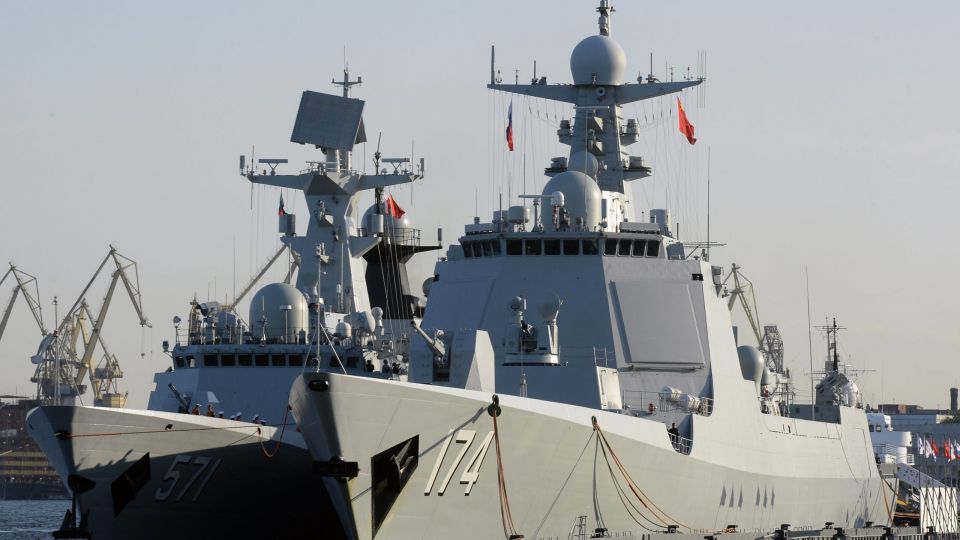April 25, 2019
China has flexed its muscles before in the South China Sea.
China displayed its military development toward assembling its version of a carrier strike group during a naval parade in Qingdao, China, on Tuesday. The international fleet review marking the 70th anniversary of the foundation of the People’s Liberation Army Navy showcased Chinese naval vessels such as China’s own aircraft carrier and state-of-the-art destroyers.
It is certain that the Chinese navy, which aims to exclude the U.S. military from the western Pacific Ocean to gain maritime hegemony, will increase provocative maritime maneuvers with its aircraft carrier
Besides China, Japan was one of the 13 countries participating in the naval review. The crew members and others on these countries’ vessels saluted Chinese President Xi Jinping, who also heads the PLA, standing on the deck of a Chinese destroyer. It was a grand occasion for Xi, who has set a goal of making China a naval power.
The other nations participating were South Korea, Australia, Russia, India, Bangladesh, the Philippines, Vietnam, Singapore, Thailand, Malaysia, Brunei and Myanmar.
Top class
Participating in the fleet review for the first time was China’s approximately 180-meter-long Type 055 guided-missile destroyer, one of the largest destroyers in Asia. Other countries had been keenly watching the construction of the destroyer, which the U.S. Defense Department thinks of as a cruiser.
The Type 055 destroyer is equipped with high-powered radars and 112 missile silos to launch missiles vertically. It is mainly designed to intercept enemy missiles and fighter jets attacking an aircraft carrier. Analysis of the destroyer also shows it as having capabilities similar to the U.S. military’s cutting-edge Zumwalt-class destroyer.
Some participants from other countries in the fleet review said that the Type 055 guided-missile destroyer means China has reached the top class in terms of destroyer capabilities. China is constructing several Type 055 destroyers, with reports that a sixth destroyer will soon be launched.
Carrier strike groups mainly consist of an aircraft carrier, destroyers that protect the aircraft carrier, submarines and supply vessels. The large replenishment vessel Hulun Lake also took part in the fleet review. It apparently can fuel and supply an aircraft carrier so that the aircraft carrier can navigate for about two months.
Sea power
Chinese navy chief Shen Jinlong emphasizes in the Chinese Communist Party journal Qiushi (Chinese characters derived from “seeking truth from facts”) that an aircraft carrier is proof of China becoming a maritime power, which has been a dream of the Chinese people for generations. He asserts that elementary operative capabilities for the carrier strike group have been established.
The 1996 crisis in the Taiwan Strait was the catalyst for China’s introduction of an aircraft carrier to its fleet. According to a source close to U.S.-China relations, China was humiliated as it could not do anything against the two aircraft carriers dispatched by the U.S. military.
China has yet to disclose its operational principle for its aircraft carrier, but there is a predominant view among observers that, in case of emergency, China will operate the carrier with the aim of ousting the U.S. military from the western Pacific Ocean.
China’s first aircraft carrier, the Liaoning, was built by converting a vessel purchased from Ukraine. The second one, designed based on the Liaoning, has already been launched in Dalian, China, and will certainly be commissioned this year. There is a possibility that a third aircraft carrier under construction in Shanghai will have an electromagnetic aircraft launch system to catapult carrier-borne planes in a shorter time.
The Liaoning has sailed the South China Sea, the waters surrounding Taiwan and the western Pacific Ocean. Its areas of navigation could expand from here on out.
Peace appeal
In meetings with naval officers of other countries before the fleet review, Xi reiterated Beijing’s conventional view that China will resolutely carry out defensive measures in its national defense policy.
According to several participants at the event, seven countries of the Association of Southeast Asian Nations (ASEAN) that dispatched vessels to the fleet review were sounded out by China on a joint military drill in the Yellow Sea in late April.
The Philippines has recently shown a hard-line stance toward China in terms of sovereignty over the South China Sea. It is clear that China aims to keep the United States in check, even as Washington continues freedom of navigation operations in the South China Sea, by playing up its conciliatory stance with ASEAN.


